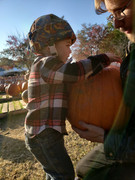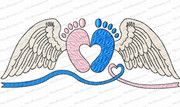With the recent findings of Alexander being Compound
Heterozygous, I turned to a support group to get a better understanding of the
math and the risks/chances associated with MTHFR Mutations being passed onto
our children.
C677T
Our child have
will have a 50% chance of having no C677T mutation, and a 50%
chance of having a
heterozygous C677T mutation.
Where I have no
mutations on rs1801133, but Alexander has one mutation. Our
child will get one
normal copy from me, and either a normal or a mutated copy
from
Alexander.
50/50 chance.
A1298C
Our child will
have a 25% chance of having no A1298C mutation, a 50% chance
of a A1298C
heterozygous mutation, and a 25% chance of a homozygous A1298C
mutation.
You have one normal and one mutated copy of A1298C, and so does Alexander.
The possible combinations are:
My normal + his
normal copy = no mutation
My normal + his
mutated copy = heterozygous mutation
My mutated + his
normal copy = heterozygous mutation
My mutated + his
mutated copy = homozygous mutation
In Rare Cases:
Multiple Mutations / Triple Mutations could occur, but that is very rare.
This is important to understand because the bottom line of the math on the inheritance probabilities is that any child he and I have has a 100% chance of being either heterozygous for the 1298 or the 677, homozygous for the 1298, or having the compound mutation. Sadly, I am upset about this, naturally, I don't want to pass any of my issues onto my children in the future.
It is 25-25-25-25, that is, 25% 677-Normal, 25% 1298-Normal, 25% 677-1298, and 25% 1298-1298. There is no scenario in which our child[ren] is Normal-Normal.
What is important to understand is that after one of our child[ren] leaves the nurturing environment of my womb, he or she will continue to need supplementation for the BH4 pathway, or the methylfolate pathway, or both.
Without that support after the child is born, according to Dr. Ben's theory, the child will have a high likelihood of developing autism. 100% of autistic children have one or both of the 677-1298.
Ideally, one would probably choose to avoid having the child develop autism. Therefore, the child should be tested at birth to determine his or her genetic status, and then be supplemented accordingly to support normal brain function development.
 Born: June 25th 2009
Born: June 25th 2009






0 comments:
Post a Comment